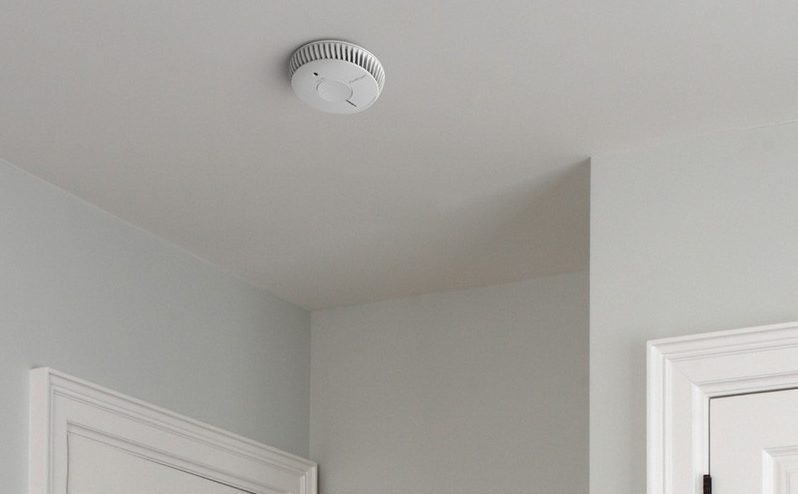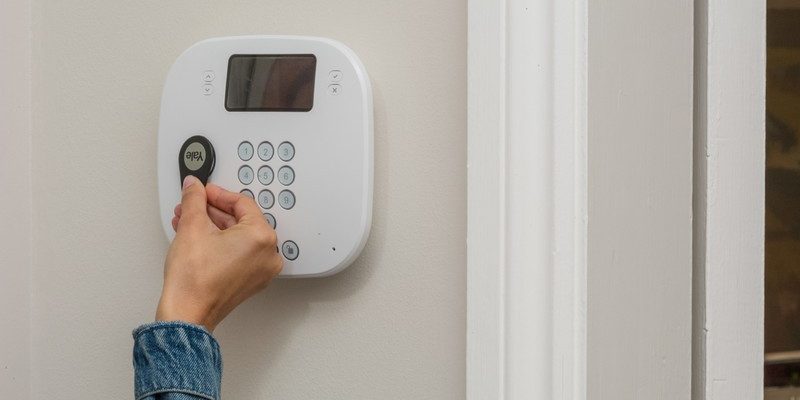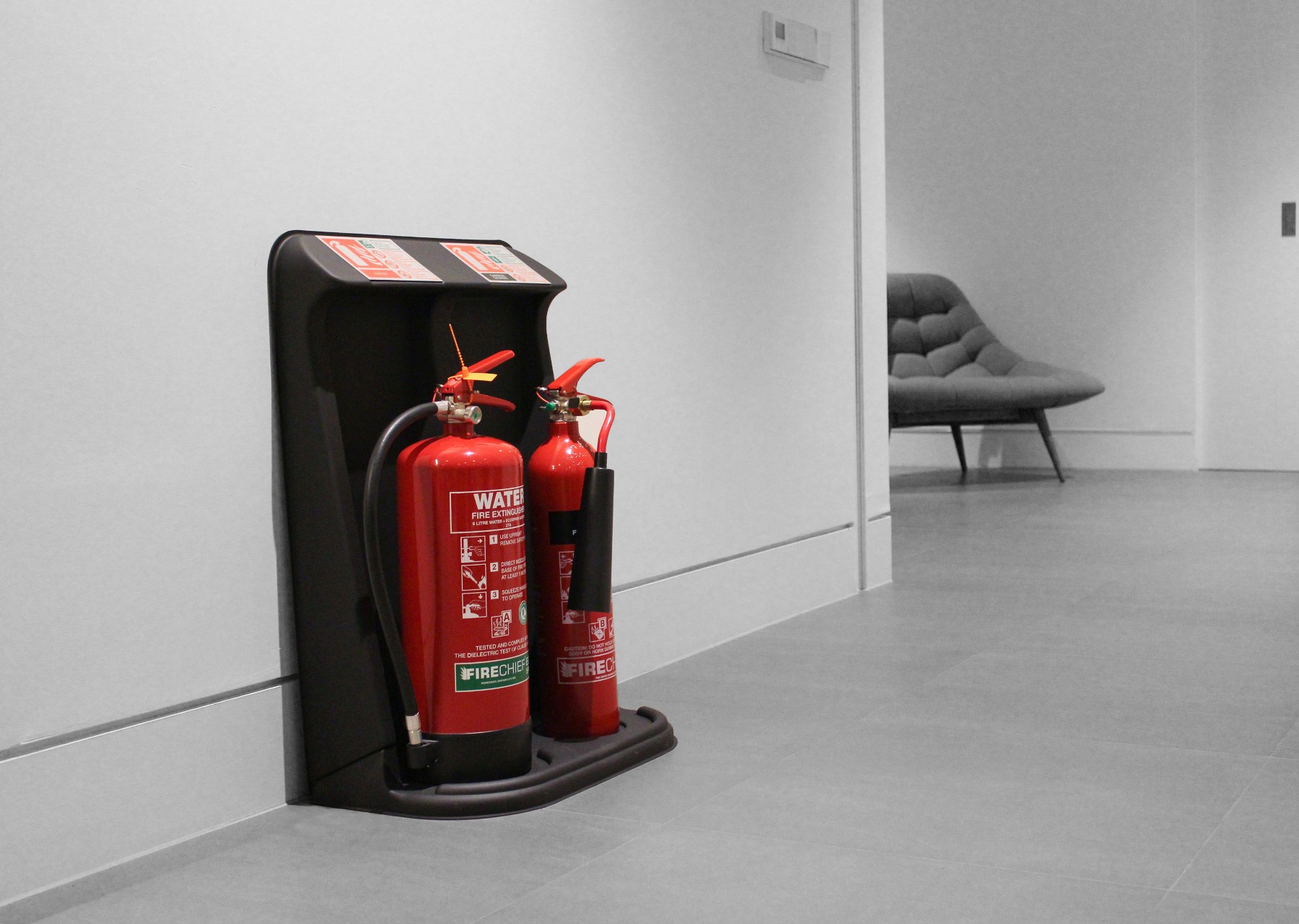It’s no secret that smoke alarms can save lives. Whether you need a replacement alarm for your kitchen or you’re fitting an interconnected system throughout a multi-story property, choosing the right type is key to staying safe.
There are two main types of alarm to choose from, optical smoke alarms or heat alarms – with each type being suited for different situations. Do you want mains powered or battery powered? A combination alarm so you don’t need to worry about carbon monoxide poisoning?
The truth is, you’ll probably want different types of detectors in different places around the property you’re securing. You need to consider the type of room you’re installing a detector in, your budget, and how you want your detector to be powered.
Types of Smoke Alarm
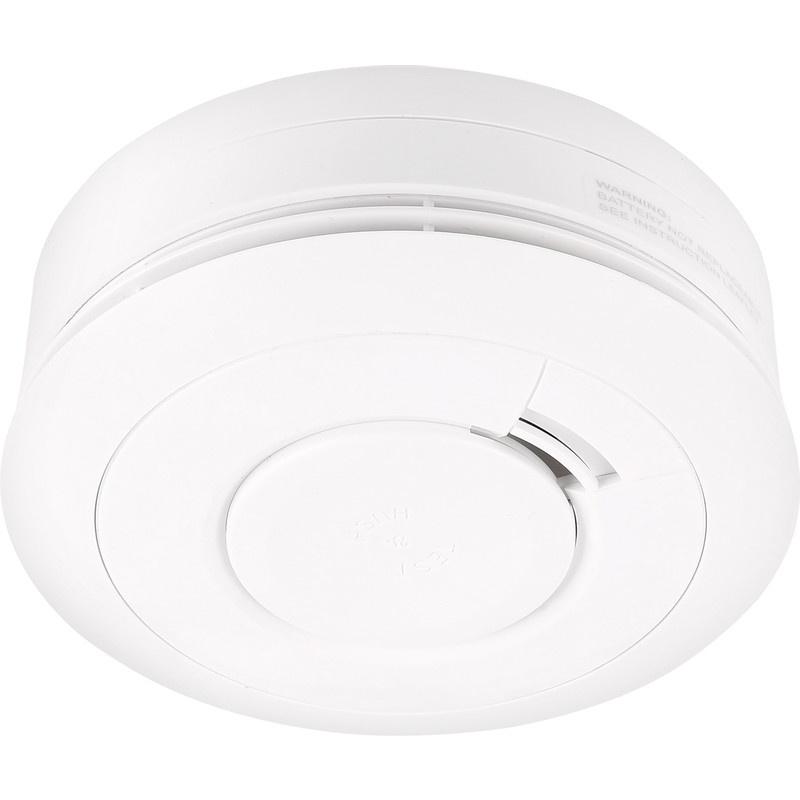
Optical Smoke Alarms
Optical smoke alarms use an infrared LED which pulses a beam of light into a sensor chamber every 10 seconds to check for smoke particles. When fire breaks out, smoke enters the chamber and the light scatters the particles – which causes the alarm to sound.
These alarms are ideal in bedrooms, living rooms and ground floor hallways because they’re good at detecting smouldering fires which can often occur when synthetic materials burn – such as a cigarette on a fabric sofa.
It’s important to consider that optical smoke detectors are less suited to fast-burning fires as these produce less smoke.
Advantages
-
Can be used in a variety of environments
-
Ideal for detecting smouldering fires
-
Technology has advanced to match the power of ionisation alternatives
Things to Consider
-
Better at detecting smouldering rather than fast-burning fires
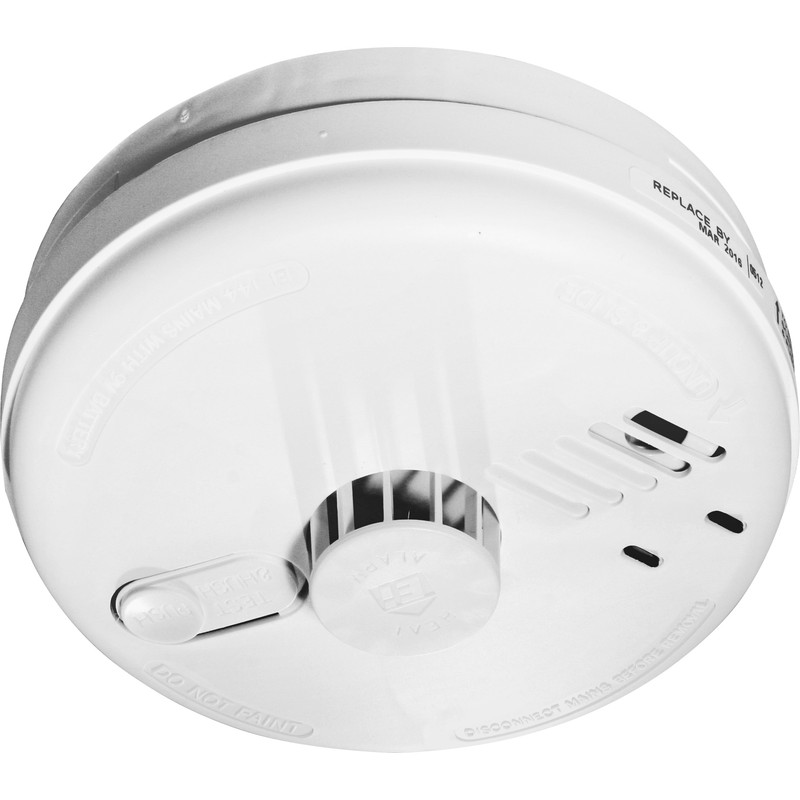
Heat Alarms
Heat alarms work in a simpler way than smoke detecting alternatives. Instead of reacting to smoke, a heat element inside detects when the temperature rises above 57 degrees celsius.
They’re used in kitchens, garages, and other areas where there are high levels of humidity, fumes or dust. Heat alarms are less likely to cause false alarms as they more accurately detect when a fire has started.
Heat alarms can’t detect small temperature changes, meaning they may miss the earliest signs of fire. They also fall short when detecting lower temperature fires that have a lot of smoke – such as damp fires or smouldering fires.
Advantages
-
Effective for areas where fires are likely to start
-
Less likely to cause false alarms than smoke detectors
Things to Consider
-
Will respond to large temperature changes only
-
Better suited to high temperature, low smoke fires
Smoke Alarm Power Supply Types
Mains-Powered Smoke Alarms
Smoke and heat alarms powered by the mains are often preferable because they’ll never run out of power. This means you’ll always have protection against fires breaking out in your residential or commercial building.
They can also be interconnected to other alarms – if one alarm is down for any reason, you’ll have others to back it up and alert you to danger. This can also mean that once one alarm sounds in a building such as a large apartment block, the others can also be programmed to sound.
However, if you ever want to do any maintenance on a mains-powered alarm, the entire electricity system has to be turned off. Also, if the electricity is off for another reason, you won’t be protected by the alarms. Installation can be more complicated than with a battery-powered alarm because it needs to be hardwired into the electrical system in the building.
Battery-Powered Smoke Alarms
Battery-powered alarms are common in residential properties because they often come with a lower price-tag and are easy to install – simply pop a battery in and you’re protected.
Even if the electricity fails in your building, such as in a power-cut, you’ll still be protected by your battery-powered alarm and it won’t malfunction under these conditions.
These alarms need to be checked regularly and the battery needs to be replaced at least once or twice a year unless you have a 10 year sealed-for-life battery. These last the lifetime of the alarm. Battery-powered alarms can also be wirelessly interlinked, so when one alarm sounds, they all sound.
Combination Alarms
Smoke and Heat Alarms
Smoke and heat alarms use an algorithm of combined signals from a heat detector and an optical smoke detector to trigger an alarm. They’re ideal for living rooms, escape routes and hallways because they can detect big flames as well as thick smoke particles from smouldering fires.
Combination smoke and heat detectors reduce the likelihood of false alarms. They're also more likely to pick up on different types of fire – including smouldering and fast-burning fires.
Smoke and heat detectors tend to come with a slightly higher price tag than smoke detectors alone, so you may want to consider whether it’s essential to your situation.
Smoke and Carbon Monoxide Alarms
Smoke and carbon monoxide detectors are a great choice if you want to reduce the number of alarms in your space. Carbon monoxide is known as the ‘silent killer’ because you can’t see, smell, or taste it – so a CO detector is essential for any building.
These combined alarms are recommended wherever you would use an isolated carbon monoxide detector. For example, each floor of a house, bedrooms, hallways, at the top of stairs, and living rooms or near any fuel-burning appliance.
As smoke detectors shouldn’t be used in the kitchen (or anywhere where there is more likely to be smoke), neither should combined smoke and CO alarms. Instead, use a heat alarm and a separate CO detector to make sure you’re protected.
Key Smoke Alarm Features
Interconnected Alarms
Connecting all the alarms within a domestic or commercial building means that if one detector responds to smoke, all of the others on the system will also sound. This improves safety by alerting you to fire before it can spread.
Interconnected alarms can be battery operated by using radio frequency signals to alert the other detectors in the system, or mains powered alarms use electricity to send alerts throughout the building.
As of February 2022, all homes in Scotland have a legal requirement to have interlinked alarms.
Battery Type
When buying a battery-powered fire alarm, you have the choice between a 9v alkaline battery or a lithium battery. On a budget, a 9v alkaline battery works well and comes at a lower price. But lithium batteries often last longer and may save money over time.
9v alkaline batteries last 12-18 months, whilst lithium batteries can last 5+ years. Check your alarm batteries once a month as a minimum. Smoke alarm sensors last 10 years, so replace your alarm after this time to remain protected.
Mains-powered smoke alarms may have battery backups in case your detectors lose power.
RF Bases
RF (radio frequency) bases attach to battery-operated fire alarms to allow them to be wirelessly interconnected throughout the system. If one alarm detects smoke, all alarms will sound. This means your building and everyone in it is protected.
Using an RF base on a wireless, battery-powered alarm means you can move the detector around – such as if you’re renovating your home – whilst still benefiting from an interlinked system.
You can also connect RF bases to mains-powered smoke detectors to mix and match the alarms in the system, and use the RF base as a backup if the mains supply is off.
IP Rating
An IP rating, also known as an Ingress Protection rating, states the protection a device has against foreign objects like water or dust. Indoor fire alarms need less protection against water but more protection against dust, whilst outdoor sirens need more water-resistance.
The rating is stated as 'IP' followed by 2 numbers. The first number refers to the protection against solids – such as hands, rocks, or dust – and is labelled from 0 to 6, with 6 being full protection from dust.
The second number is about protection from water, with 0 being the least and 9 being the most water-resistant. Indoor smoke detectors have an IP ratings of IP30 or IP40; a moderate level of solid resistance, and a low level of water resistance.
Commercial Accessories
You need to conform to the Regulatory Reform (Fire Safety) Order 2005 to ensure you’re providing adequate protection in commercial environments. That said, there is no “one size fits all”, as different commercial properties have different needs.
Accessories such as call points, banshee sounders and isolator switches can make it easier to alert a large number of people to a fire, as well as carrying out essential fire alarm maintenance.
When fitting a commercial building with a smoke detection system, you should use interconnected alarms to ensure one alarm can alert the entire building in the event of a fire.
Third-Party Certification
When dealing with life-saving equipment like fire alarms, it’s vital to ensure they’ve been through the necessary and recommended third-party certification.
The BSI Kitemark (British Standards Institute) and the EN Certification (used in the European Union and around the world) confirm that manufacturers are selling reliable smoke alarms. These products go through rigorous testing to make sure they stand up to the claims manufacturers make, detect smoke, heat and fire quickly, and are not dangerous to have in your property.

